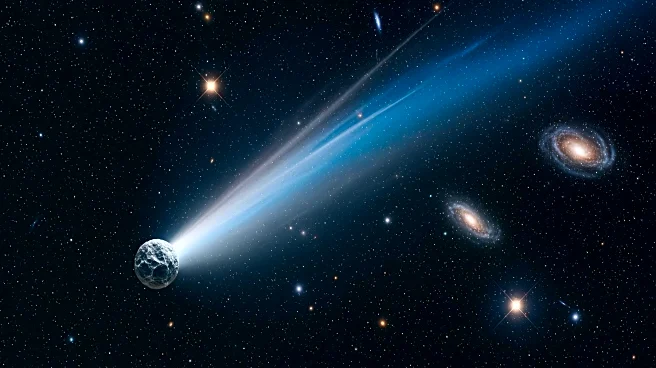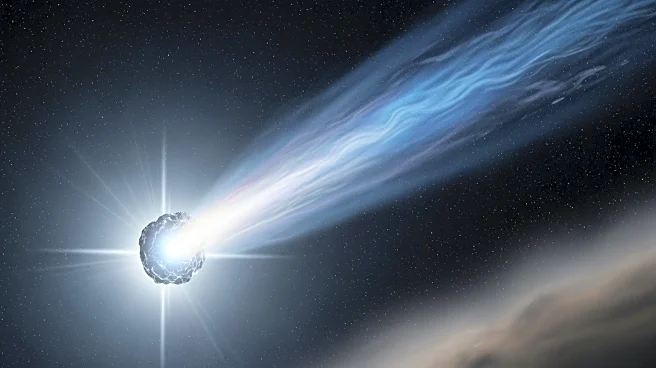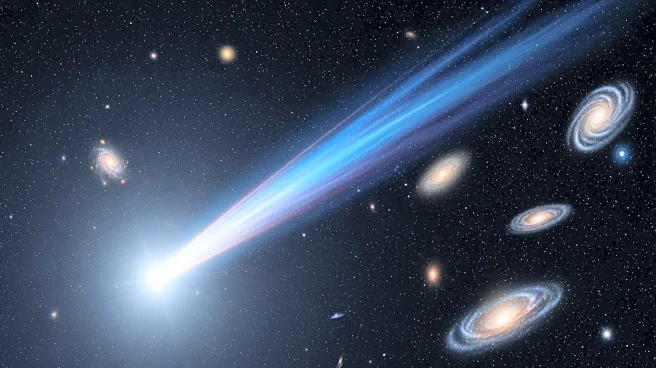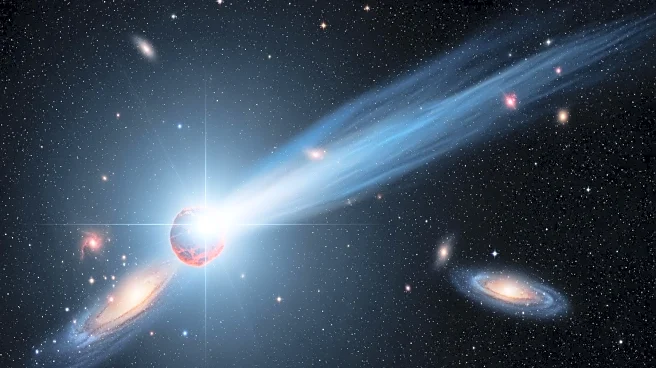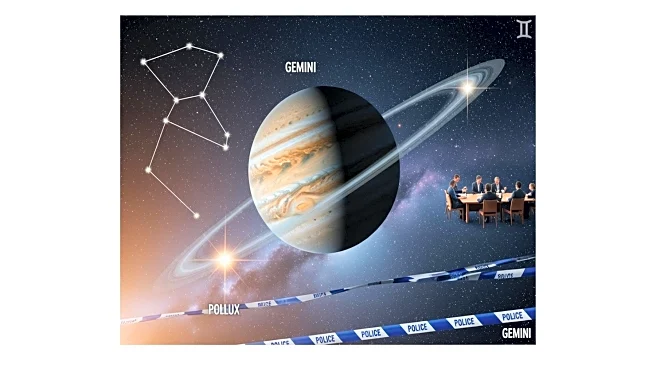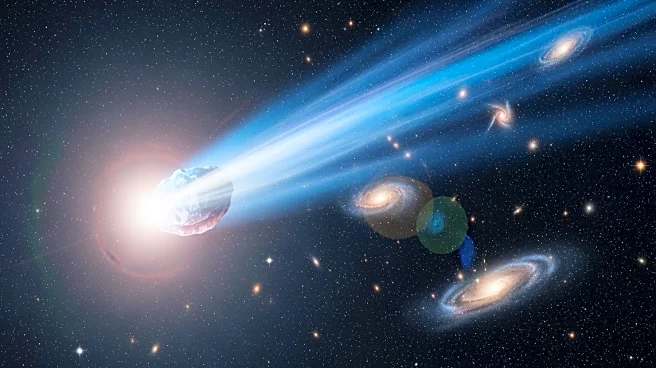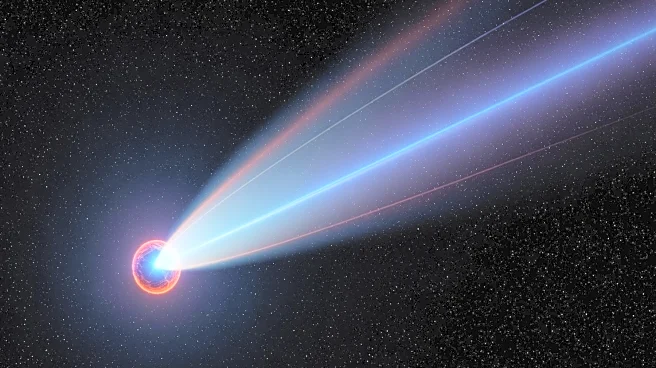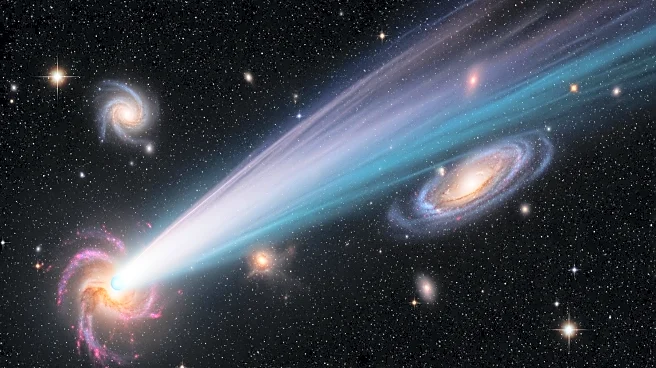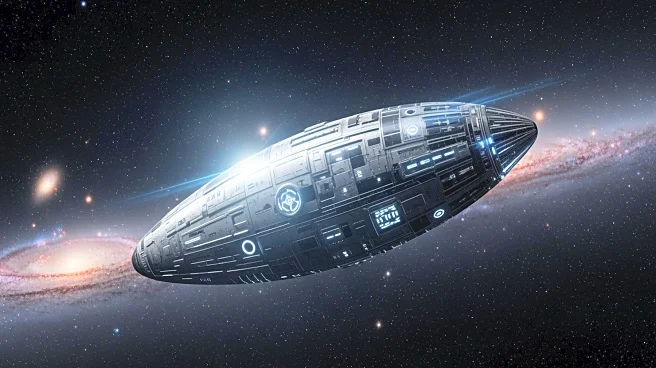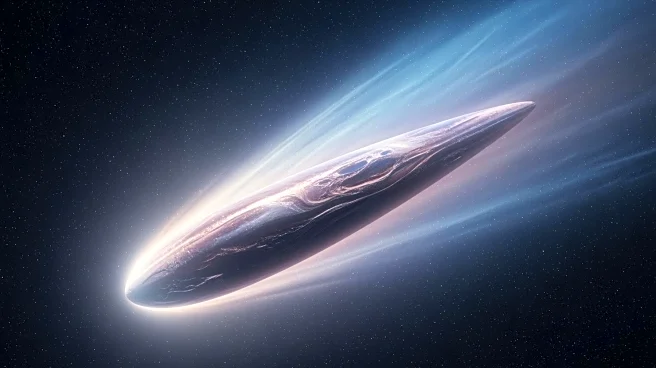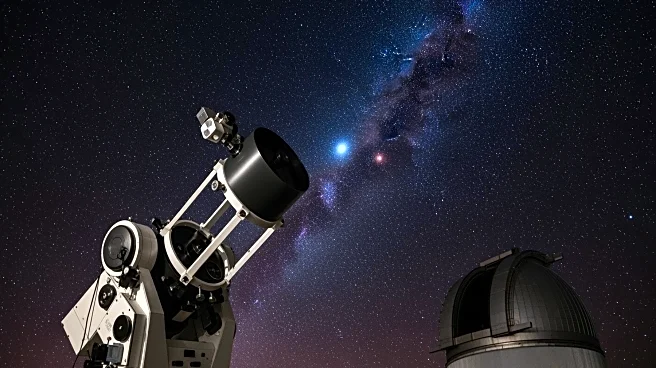What's Happening?
Astronomers have detected glowing nickel vapor in the gas surrounding the interstellar comet 3I/ATLAS, marking a significant discovery in the study of interstellar objects. This detection was made at a considerable
distance from the sun, where temperatures are typically too low for metals to vaporize. The comet, discovered by the Asteroid Terrestrial-impact Last Alert System (ATLAS) on July 1, 2025, is only the third confirmed interstellar object. Unlike its predecessors, 'Oumuamua and comet Borisov, 3I/ATLAS was detected early in its journey, allowing astronomers to observe its chemical activation as it approaches the sun. Observations from the Very Large Telescope in Chile revealed a trajectory suggesting the comet formed billions of years ago, potentially older than our solar system. The detection of nickel without concurrent iron suggests nickel may be released through low-temperature processes, possibly involving molecules that break apart under sunlight.
Why It's Important?
The discovery of nickel in 3I/ATLAS provides new insights into the chemistry of materials from beyond our solar system, offering a glimpse into the building blocks of planetary systems in other star systems. This finding challenges existing theories about the vaporization of metals and suggests alternative processes at play. Understanding the chemical composition of interstellar objects like 3I/ATLAS can help scientists determine whether the materials that form planets are consistent across the galaxy or vary significantly. This research could lead to a deeper understanding of the diversity and complexity of planetary formation processes, potentially impacting theories about the origins of our own solar system.
What's Next?
As 3I/ATLAS continues its journey toward the sun, astronomers will gather more data on its chemical composition and activity. The comet is expected to reach its closest approach to the sun on October 29, 2025. Continued observations will focus on detecting new chemical species and understanding the processes releasing nickel and other elements. This ongoing research will contribute to a more comprehensive picture of interstellar objects and their role in the broader context of astrophysics.
